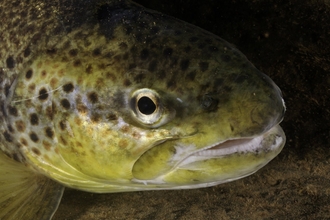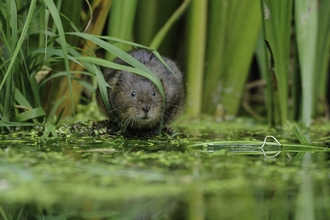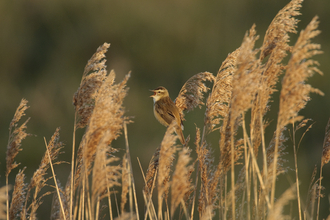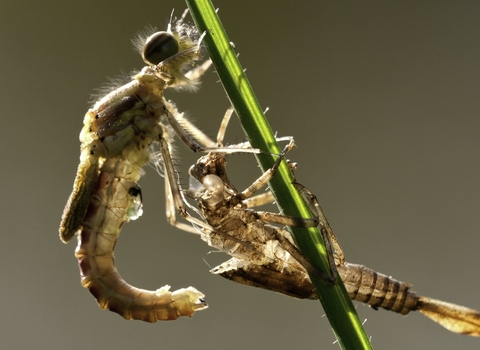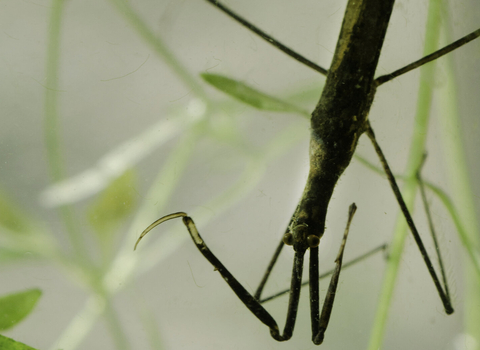Water scorpion (c) Barry Clough
Invertebrates, crustaceans and microscopic creatures
Peep closely at the water surface to discover a world of weird and wonderful small creatures!
Freshwater Invertebrates spend at least part of their life cycle in the water. They help maintain water quality and are vital food for fish, birds and bats.
Freshwater crustacean can vary in size, from tiny water fleas less than one millimetre in length to crayfish that resemble mini lobsters. All have an exoskeleton, jointed legs and antennae.
Dip beneath the surface, and a whole other world emerges. Microscopic creatures are barely visible to the naked eye, including algae and bacteria!
Ponds
Ponds are brilliant at attracting wildlife, even just as a source of drinking and bathing water for birds. It doesn't matter what size it may be, there is always something to see!
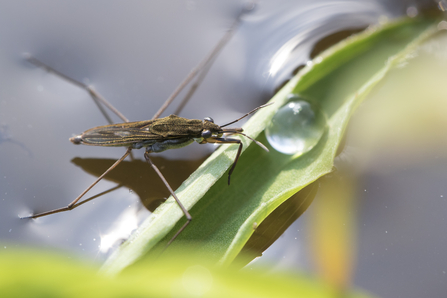
Pond skater (c) Chris Lawrence
Peep closely at the surface and you might spot some smaller creatures whirling and skating around.
The shiny black whirligig beetle can often be seen shooting across the surface or diving underwater searching for smaller insects to feed on.
Pond-skaters have water-repellent hairs on the bottom of their feet, enabling them to walk on the surface film of the water, they hunt by detecting vibrations. They can often be confused with water-measurers, which are thinner and more fragile looking.
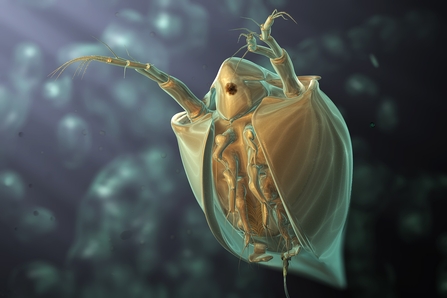
3D water flea
Dip beneath the surface, and a whole other world emerges.
Glass-marble-like volvox slowly turn in the water: a tiny green sphere of multicellular algae, barely visible to the naked eye, containing even smaller green spheres.
Daphnia, also known as water-fleas, feed on algae and often congregate in the warmer waters. These tiny creatures are see-through: you can watch their heart-beat, see the algae in their gut, and can often see their eggs inside their bodies. You might also see the copepod Cyclops, egg-sacs poking out to each side, darting amongst groups of Daphnia.
Water scorpion (c) Barry Clough
Surprising creatures in ponds include the water scorpion - a poor swimmer so common on the edge of ponds, and the mantis like water stick insect. Both these species have a long 'tail' which is actually a snorkel, protruding above the water.
Despite there being several wetland spiders, the water spider is the only one that spends its life under the water. In its pond habitats, it looks silvery because of the air bubbles it traps in its hairs
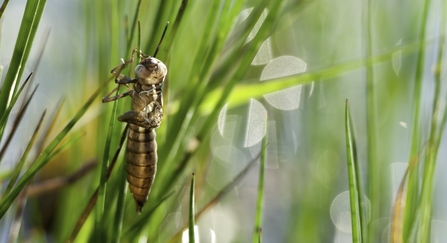
Emperor dragonfly {Anax imperator} exuviae (c) Ross Hoddinott/2020VISION
Larger invertebrates in and around ponds that you might see include various species of dragonflies, damselflies, demoiselles and their larvae. For a detailed look, the British Dragonfly Society is worth a visit.
Dragonfly larvae (nymphs) live in the water and have a surprising way to catch prey: a hinged jaw shoots out from under their face! After spending up to 5 years as a nymph, they climb up tall grass out of the pond to complete the transition into a dragonfly, shedding their outer skin or exuvia, which you can often see left behind.
Rivers and Streams
Freshwater shrimp (c) Margaret Holland
If you lift a stone at the edge of a stream, you’ll probably see the freshwater shrimp, Gammarus, in the shallow water. They are widespread and common and can be seen swimming on their side with their abdomen curling in and out,
A closer look at the underside of the rock might reveal cased caddisfly larvae clinging to the surface covered in tiny gravel as a disguise.
Flatworms, leeches and freshwater limpets might also be gliding across the rock’s surface.
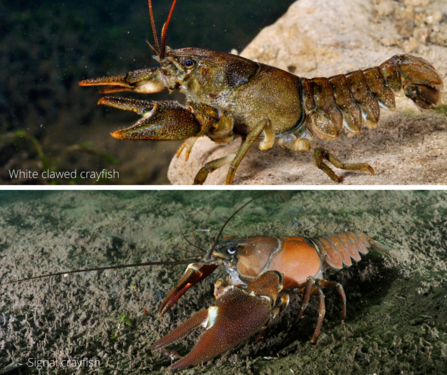
White clawed crayfish (top) vs signal crayfish (bottom). (c) Linda Pitkin/2020Vision
The White-clawed crayfish is the only native species of freshwater crayfish in the British Isles. It is under threat from an invasive and introduced American signal crayfish.
Our native crayfish inhabits small freshwater streams of a depth less than 1 metre, hiding underneath stones and rocks and in small crevices where they forage for food.
However, without action we may lose white clawed crayfish forever. Our Rivers team recently discovered their presence in the River Corve in South Shropshire, with funding they carried out a research project to try and protect this population. Read about this project here.
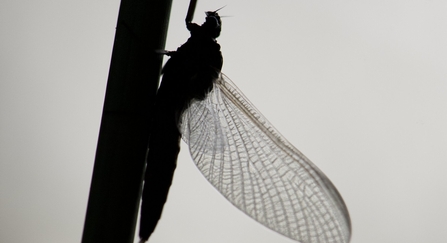
Mayfly (c) Katrina Martin / 2020VISION
We’re delighted that the Yellow Mayfly Potamanthus luteus is making a come-back on the River Severn and its tributaries. It has recently been spotted on the Rea Brook in Shrewsbury! This species is extremely rare and is on the International Union for Conservation of Nature vulnerable list. It relies on good water quality.
Keep an eye out for this species and please submit your sightings to your local recording team. Mayflies can be tricky to identify, so for more information and river-fly identification assistance, click here.
The critically endangered Scarce Yellow Sally stonefly Isogenus nubecula has been re-discovered after 22 years on the River Dee, close to the North Shropshire border.
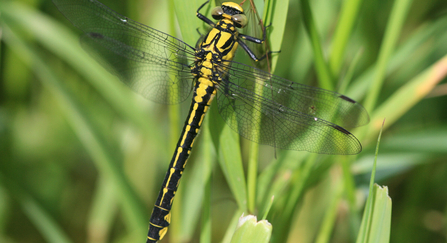
Common clubtail dragonfly (c) Vicky Nall
Another species that we are keen to encourage people to record sightings for is the Common Clubtail Dragonfly. The larvae live in the silt and mud of riverbeds for three to five years. Once emerged, adults quickly move away from the river to woodland up to 10km away, where they spend most of their time in the canopy of trees. Look for the distinct black and yellow markings.
The Shropshire Dragonflies website has a guide on how to submit your records.

